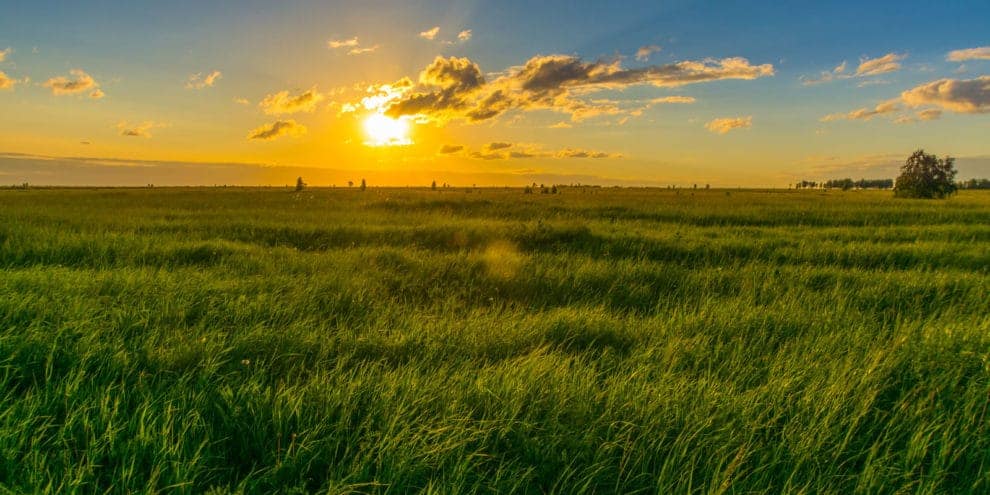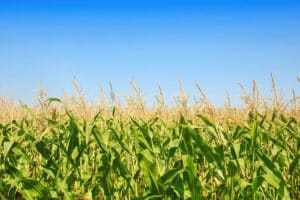Many more Americans own corporate stock than rural land. Why do we invest in stock, which is risky, rather than land, which is not?
Based on a statistically valid opinion survey that I conducted with the reflection on my computer screen, I offer six reasons.
First, stocks are easy to buy and sell. Second, they’re easy to follow up and down. Third, each company provides information, the quality of which, it may be said, varies.
Fourth, the numbers and ratios associated with companies and stock lend a certainty to forecasts that gives investors confidence in their crystal balls. Quantitative analysis can always be confirmed by the guy on the next barstool who says he plays the market. Fifth, much investing wisdom is free for the listening, such as Buy and Hold. All such wisdom is true, except when it isn’t. Finally, some ordinary people occasionally win, just like in Vegas.
These reasons don’t bear much weight, though I am personally attached to each and every one.
I’m now inclined to follow a new rule: if it seems sensible to me, do the opposite.
I thought oil stocks would rise with crude surging past $90 a barrel. Nope, look at Exxon and Chevron—both down during the last four months. Given the lack of demand for new housing and tight credit, I figured home builders would fall. Nope, Pulte, Toll Brothers and the others have gone up. Warren Buffet should hire me immediately.
It is certainly true that had anyone who bought the broadest possible basket of stocks many decades ago would have done okay.
As a whole, Professor Jeremy Siegel of the University of Pennsylvania’s Wharton School says that stocks show an average gain of seven percent a year when the data are controlled for inflation. This average works when looking at many stocks over many years. It may or may not work for any individual stock; it doesn’t work for the three lousy decades in our memory—the 1930s, 1970s and this one.
Adjusted for inflation, a dollar invested in the S&P 500 in April, 1999 produced no gain at the end of March, 2008. The performance of big U.S. stocks amounts to an average annual rise of 1.3 percent during the past decade after dividends and inflation are counted in. (E.S. Browning, “Stocks Tarnished By ‘Lost Decade,’” Wall Street Journal, March 26, 2008.)
If you bought any individual stock, it could have gone up, down or disappeared over time. From my perspective, buy and hold makes sense only with a very broad basket and a 20-year-plus horizon. The rule for the stock market seems to be ten years or more of good is followed by ten years of bad.
During this most recent stock-market malaise, Treasury bonds, commodities, real-estate investment trusts (REITS), gold and foreign equities have beaten U.S. stocks. These alternatives can be as difficult to understand as American equities, often more so. But stocks are easy to buy and sell, watch go up and down, etc.
Ordinary cash-strapped, middle Americans usually do better investing in rural land.
Unlike stocks, land investments can be deciphered. Documents and numbers are reasonably transparent. Buyers can learn how to evaluate assets and liabilities. Professional help — lawyers, surveyors, foresters, consultants — are available to help research property prior to submitting an offer.
Scoping a land purchase is not like groping for Braille in corporate reports. It’s more like checking things off a to-do list.
The market for rural land in most areas is transparent. Land of all types is a finite resource. Good land — however defined — is even more finite.
Demand for land grows because America’s population is increasing and the top one-third of our income distribution has discretionary cash.
To get one handle on land appreciation, look at farmland. Values of agricultural land — cropland and pastureland — have increased steadily since the mid-1980s.
Farm value in current dollars averaged $2,160 per acre nationwide on January 1, 2007, up from $974 in 1998, a 13.5 percent average annual gain according to the U.S. Department of Agriculture. Cropland during that period rose from $1,340 to $2,700; pasture rose from $489 to $1,160.
The current bubble in prices for corn, wheat and soybeans jacked up average cropland price during 2007. I doubt that corn-based ethanol will sustain the high prices for crops and cropland. Increasing global food consumption should prove to be a reliable driver of American farmland prices.
Timberland has increased in value in almost every part of the country since 2001. Late in 2005, GMO head Jeremy Grantham, who manages about $100 billion, said that timberland will be the best-performing asset through 2012. His timberland investments have done exceedingly well. Timberland prices are being driven by investors, pension funds, university endowments, developers and managers of Big Money.
In 2007, timberland showed a total return (income plus capital appreciation) of 17.45 percent, according to the National Council of Real Estate Investment Fiduciaries (www.ncreif.com), which tracks farmland, timberland and other real-estate returns.
One study by the James W. Sewall Company shows timberland beating the stock market since 1960, up an annual average of 12 percent for stocks but nearly 14 percent for timberland.
Timberland also gets tax benefits — deductions, property-tax help and possible eligibility for a conservation easement or 1031 exchange — that stockowners don’t.
Both farmland and timberland are now running counter to the slumping stock market. But the value of vacation homes — which are usually more home than land — have weakened slightly along with the decline in price and market for primary residential property.
While sales of both new and existing vacation homes dropped to 740,000 units in 2007, down from the record of 1.07 million in 2006, they still accounted for about 12 percent of all home sales, according to a March report from the National Association of Realtors. The median price of a vacation home in 2007 was $195,000.
One problem in tracking rural land values is that “rural land” is a term that covers a lot of ground—cropland, pasture, lifestyle and hobby farms, with no significant cropland or pasture, timberland, undeveloped land (non-agricultural land with no timber value), land suitable for residential development, mineral land, existing second-home land, recreational land, environmentally sensitive land and so on.
No one collects property-sales data for all land types from the more than 2,000 county courthouses that serve a significant number of rural landowners. This is a big data-collection and analysis job that a land-grant university should take on.
Texas A&M’s Real Estate Center tracks Texas land values, county by county. That’s the closest we come.
For the individual buyer, the county courthouse offers a quick way to measure local land appreciation.
Spend an hour in the office where property assessments are kept. Identify a parcel of land and go back 25 years to locate a baseline tax-assessed value. Stick with the value of the land alone; forget about improvements, such as houses.
Then dig out the succeeding reassessment values for that parcel coming forward. Reassessment periods vary among states, but all property is usually reassessed every three to five years. The five or more reassessment values will show how one particular parcel has appreciated over time.
Its actual rate of appreciation may be significantly higher than the rate calculated from tax-assessed values, because the latter usually understate current market values in rural counties.
Calculate an annual average appreciation rate, then compare that rate to the seven percent norm for stocks. Track the value of the county’s total land over 25 years to determine how your parcel of interest compares with the appreciation of all county land.
My best guess is that land nearly everywhere will exceed an average annual appreciation rate of more than seven percent since the mid-1980s.
So my hot stock-market tip of the week is this: Buy land.
This content may not be used or reproduced in any manner whatsoever, in part or in whole, without written permission of LANDTHINK. Use of this content without permission is a violation of federal copyright law. The articles, posts, comments, opinions and information provided by LANDTHINK are for informational and research purposes only and DOES NOT substitute or coincide with the advice of an attorney, accountant, real estate broker or any other licensed real estate professional. LANDTHINK strongly advises visitors and readers to seek their own professional guidance and advice related to buying, investing in or selling real estate.










This is a joke right? With stocks people are lucky to get a 10-20% annual return, and there is still the chance of losing it all. With smart land development investments you’re looking at 5,000,000% returns. A poor land investment will still easily double your initial investment in less than a year especially when you take into account leverage. It does take some smarts though to do it right.
are you still investing in land in 2011 . . . how about prime commercial land on I-25 in Colorado that is ready for development at 80% discount?
A 5,000,000 percent return for “smart land development investments” is certainly better than I’ve ever done. Perhaps Logan will share his approach.
I don’t think I would rush out and put my money into land. The trouble with rural land is that nobody is paying for it while you hold onto it – it’s not like urban land which can be a parking lot or some other rent generating building until such time as the time is right for development. And buying any type of property with the hope that it appreciates is pretty risky. It’s only one of the ways to make money in real estate. I’d rather bank on generating income from a property and having someone pay my mortgage down for me, then wait for that fickle mistress appreciation to come around so I can make my money.
WRONG. Wooded land rented to hunters, open land for pasture, and tillable rented for crops ALWAYS returns more than the cost of property taxes. In addition, the owner can harvest trees, install and enjoy trails (try that with mutual funds!) and much more.
Try to sell covered calls on your land then. QQQ has crushed your land investments in the last 20 years.
Rural land can have the benefit of several potential streams of income, just as urban property. Timber harvest, farmland rents, and hunting rents are all passive ways that rural land can generate income. I’m sure some of you can think of others as well.
The smart money is spent on pursuing those rural properties that are, or will be in the near future “transitional” in nature. Meaning, a property that is now rural, but potentially the highest and best use may be something else entirely–a higher valued use. Properties such as these can often be purchased at rural land values, held short-medium term, generate income during the hold period, and benefit from rapid appreciation as the highest and best use changes.
5,000,000% returns is quite a lofty goal. My argument is that land only needs to be a steady 7-10% return to become a better investment than a volatile 10-15% return from stocks, but that does have a great deal to do with one’s tolerance for risk. Take a look at the characteristics of “old money” in America…especially the old money that still has money today. I’ll bet you will find rural real estate as a common thread between them.
Here’s another land technique and I know Russell Ward will echo my comments on this:
On numerous occasions, I’ve gotten an option on a piece of land (with ten dollars, yes that’s ten bucks), then turned around and assigned my contract for between five and twenty thousand, within a couple of months. My hard costs would be about $100 worth of classifieds and a couple of signs, plus my time to show the property – no closing costs of course. If we say an average assignment of ten thousand, this low cost, very low risk strategy might be worth considering against the stock market.
There are plenty of investment vehicles out there, but I like to get out in the fresh air and be enjoying my surroundings while making money!
Yours with boundless enthusiasm,
Richard 🙂
Land Specialist
Richard@NorthernAcres.com
Chief Deal Weaver
Richard@BlackWidowNetwork.com
Richard – thanks for the handoff…
As one example, DailyWealth.com likes timberland as an investment property over ANY OTHER form of real estate. Here is what he says:
http://www.DailyWealth.com – “Timberland has actually beaten the stock market since 1960 (as far back as data goes). Stocks did extremely well in that time… up nearly 12% a year. But the total return on timberland was even better, at nearly 14%. Another nice thing is timber is completely uncorrelated to the stock market. It makes sense… the trees have never heard of the NASDAQ bubble… and they don’t know what a War on Terror is.”
Also, I can appreciate Julie’s comments because I hear that objection often. I make offers on land at half-price and then quick turn it to an end-user clearing $5K or more on each deal. If I was in Julie’s position, I would look for parcels that she can get at a rock bottom price and resell them at a healthly profit.
As another option: many are dropping money in their 401K for retirement each month. I would instead step up a Self-Directed IRA, find a good buy on land, purchase the property with IRA funds and grow my money that way. Then I can sell that property at any time and the proceeds of the sale are tax deferred. Then take that money and buy another property and continue to grow your money. You are more in control with your ROI and you can never appreciate how many great buys you can find it you look hard enough.
In this economy, with the roller coaster ride with stocks, I would take land over stocks any day. It’s a no brainer….
Russell Ward
Case-in-point: Port Charlotte, Florida. People tend to forget the original Florida land grabs where developers were convinced that they could make money selling building lots. So they designed elaborate plans, streets, and subdivided lots into small parcels that the average person could afford as an investment. Many did. Few were ever built, and if they were, they lacked infrastructure to support them. That’s the problem with many land deals in that they can be so remote that they’re unable to be developed. If Port Charlotte, which still faces this problem today, were to suddenly see development on these lots, they’re far too small to support most construction, and would be so close together as to be uncomfortable. Cape Coral, Florida has similar issues. The resulting strain on infrastructure becomes onerous and creates chaos for new and pre-existing residents. While the adage of “Buy land, they’re not making any more of it” might be very tempting, it’s not a wise investment in all cases, and with the recent market shocks, an investor in the short term would be burdened with the tax requirements on the property without much hope (for some foreseeable future) that the land could be resold at a profit over costs, and somewhat nebulous hope that that land is properly zoned for development. Bottom-line is it takes smart investment in any market, land or stocks, to recognize the potentials, and even in a down market, it’s knowing where to invest that will result in gains versus losses.
Great Post; BUY RURAL LAND!!!!!
Hey Julie, just wanted to make you aware of the rents landowners get. Timber harvest, hunting leases, farm rents and numerous government grant programs, n0t to mention easements, tax benefits, use value, etc. And you can sell off parts of the whole if you need cash flow beyond that.